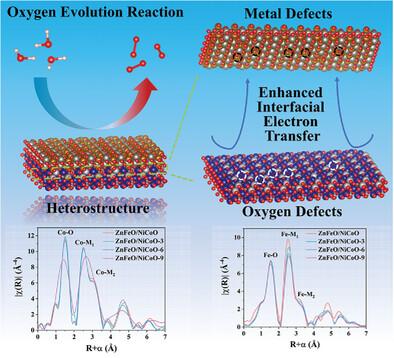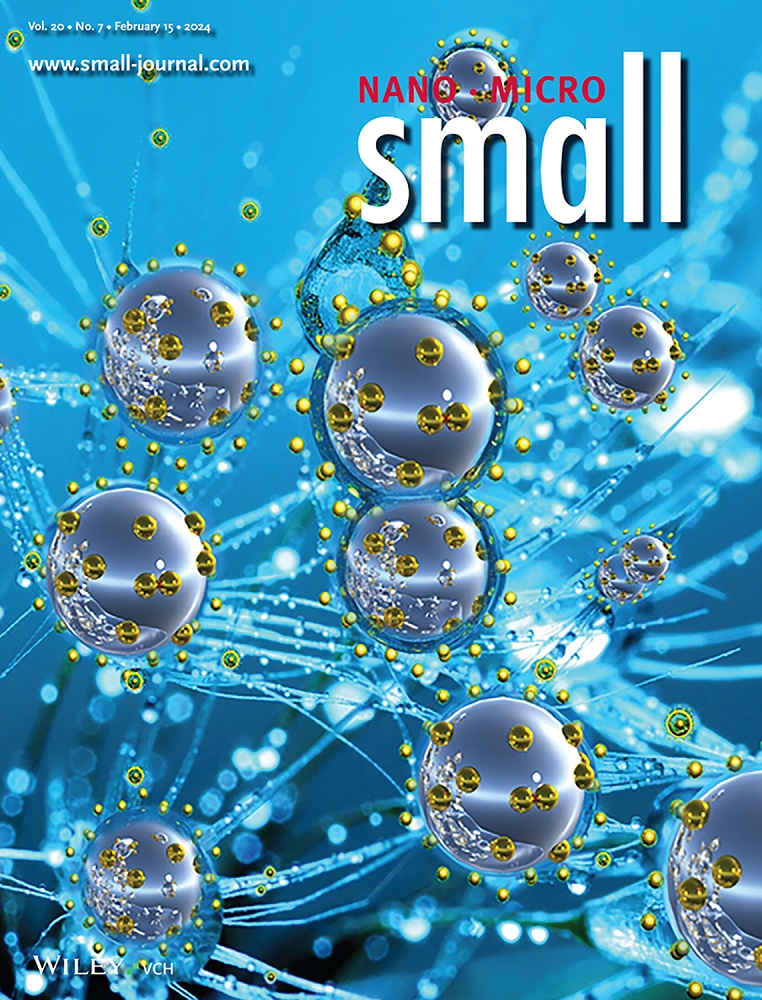Construction of “Metal Defect/Oxygen Defect Junction” in ZnFe2O4–NiCo2O4 Heterostructures for Enhancing Electrocatalytic Oxygen Evolution
IF 13
2区 材料科学
Q1 CHEMISTRY, MULTIDISCIPLINARY
引用次数: 0
Abstract
Defect engineering is a promising approach to improve the conductivity and increase the active sites of transition metal oxides used as catalysts for the oxygen evolution reaction (OER). However, when metal defects and oxygen defects coexist closely within the same crystal, their compensating charges can diminish the benefits of both defect structures on the catalyst's local electronic structure. To address this limitation, a novel strategy that employs the heterostructure interface of ZnFe2O4–NiCo2O4 to spatially separate the metal defects from the oxygen defects is proposed. This configuration positions the two types of defects on opposite sides of the heterojunction interface, creating a unique structure termed the “metal-defect/oxygen-defect junction”. Physical characterization and simulations reveal that this configuration enhances electron transfer at the heterostructure interface, increases the oxidation state of Fe on the catalyst surface, and boosts bulk charge carrier concentration. These improvements enhance active site performance, facilitating hydroxyl adsorption and deprotonation, thereby reducing the overpotential required for the OER.

在 ZnFe2O4-NiCo2O4 异质结构中构建 "金属缺陷/氧缺陷结 "以提高电催化氧进化能力
缺陷工程是提高过渡金属氧化物导电性和增加氧进化反应(OER)催化剂活性位点的有效方法。然而,当金属缺陷和氧缺陷在同一晶体中紧密共存时,它们的补偿电荷会削弱两种缺陷结构对催化剂局部电子结构的益处。为了解决这一局限性,我们提出了一种利用 ZnFe2O4-NiCo2O4 异质结构界面在空间上分离金属缺陷和氧缺陷的新策略。这种配置将两种类型的缺陷置于异质结界面的相对两侧,形成了一种称为 "金属缺陷/氧缺陷结 "的独特结构。物理表征和模拟显示,这种结构增强了异质结界面的电子转移,提高了催化剂表面铁的氧化态,并提高了体电荷载流子浓度。这些改进提高了活性位点的性能,促进了羟基的吸附和去质子化,从而降低了 OER 所需的过电位。
本文章由计算机程序翻译,如有差异,请以英文原文为准。
求助全文
约1分钟内获得全文
求助全文
来源期刊

Small
工程技术-材料科学:综合
CiteScore
17.70
自引率
3.80%
发文量
1830
审稿时长
2.1 months
期刊介绍:
Small serves as an exceptional platform for both experimental and theoretical studies in fundamental and applied interdisciplinary research at the nano- and microscale. The journal offers a compelling mix of peer-reviewed Research Articles, Reviews, Perspectives, and Comments.
With a remarkable 2022 Journal Impact Factor of 13.3 (Journal Citation Reports from Clarivate Analytics, 2023), Small remains among the top multidisciplinary journals, covering a wide range of topics at the interface of materials science, chemistry, physics, engineering, medicine, and biology.
Small's readership includes biochemists, biologists, biomedical scientists, chemists, engineers, information technologists, materials scientists, physicists, and theoreticians alike.
文献相关原料
| 公司名称 | 产品信息 | 采购帮参考价格 |
|---|
 求助内容:
求助内容: 应助结果提醒方式:
应助结果提醒方式:


